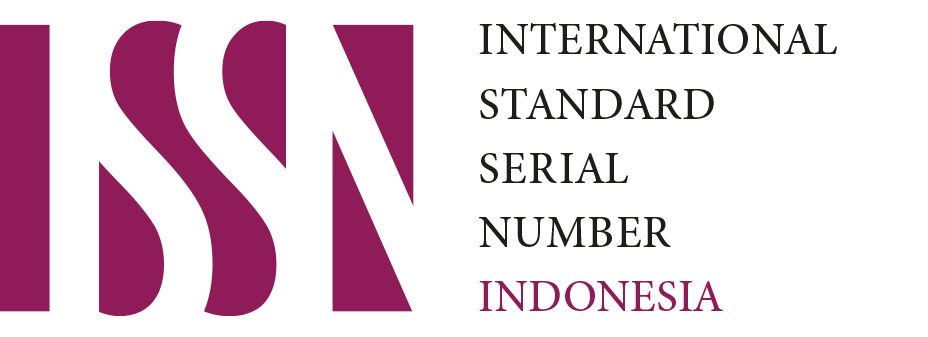Archieve Media Promotion for Collective Memory Safety on Digital Natives Generations
Downloads
Background of the study: Archives as a collective memory of a nation make it important to be managed and disseminated to all Indonesian people, especially in the current generation of Indonesian youth, namely the generation of digital natives. The generation of young people being the successors of the Indonesian nation's struggle must know the long history of the social history of the people in Indonesia through archives. The government has made a solution through a conscious archive movement but in reality the conscious socialization of the archives seems to not be heard in the community especially by the generation of digital natives. Access to archives carried out domestically in ANRI's annual report in 2015-2016 shows that in 2015 there were 5,215 people and in 2016 there were 4,747, a decline in 2016 regarding access to archives.
Purpose: This study aims to provide recommendations regarding the use of promotional media that can be carried out by ANRI institutions in maintaining the nation's collective memory, especially towards the generation of digital natives.
Method: This paper uses a literature review method with data collection of various materials contained in the library, such as newspapers, books, magazines, manuscripts, documents and so on that are relevant to research with theoretical studies and literature.
Findings: The results of this study indicate that the promotional media that is right for use by ANRI in promoting archives is through social media and media mobile phone applications based on the way of interaction of the generation of digital natives.
Conclusion: With this research, it is expected that ANRI as the highest institution managing state archives can consider the importance of promotion for archives and utilizing promotional media for the general public, especially in the generation of digital natives
Downloads
ANRI. (2017, Mei 5). Agenda ANRI. Retrieved form http://www.anri.go.id/category/2-186-Agenda/20.
ANRI. (2016). Laporan Kinerja ANRI tahun 2016. Jakarta. Indonesia: ANRI.
ANRI. (2015, Mei 5). Sambutan Kepala Arsip Nasional Republik Indonesia Pada Acara Penyerahan Arsip Citra Daerah Kabupaten Gianyar. Retireved fromwww.anri.go .id/assets/.../serah_terima_citra_daerah_kab_gianyar568460614aa10.pdf.
ANRI. (2009). UU Nomor 43 Tahun 2009 Tentang Kearsipan. Jakarta, DKI: Pemerintah. Retrieved from https://www.anri.go.id/assets/.../87Nomor-43-Tahun-2009-Tentang-Kearsipan.pdf.
Barratt, N. (2010). Nick Barratt's beginner's guide to your ancestors' lives. Bransley, South Yorkshire: Pen & Sword Family History.
Cannot., Josep P.P., William, D., & McCarthy, E.J. (2009). Pemasaran Dasar Pendekatan Manajemen Global. Jakarta, Indonesia: Salemba 4.Fandy, T, (2008). Strategi Pemasaran, Yogyakarta, Indonesia: ANDI.
Jacobsen, T., Punzalan, R. L., & Hedstrom, M. L. (2013). Invoking "collective memory”: mapping the emergence of a concept in archival science. Archival Science : International Journal on Recorded Information, 13, 217-251.
Koentjaraningrat. (1983). Metode-Metode Penelitian Masyarakat. Jakarta, Indonesia: Gramedia.
Kotler, P. (1997). Manajemen Pemasaran. Surakarta, Indonesia: PT Pabelan.
Lawanda, I.I. (2013). Arsip Sebagai Memory Kolektif: Dipresentasikan di International Conference On Indonesian Studies (ICSS) Yogyakarta, new shapir hotel, 13-14 juni 2013 (pp. 257-264). Jalan Prof. Dr. Selo Soemardjan, Fakultas Ilmu Pengetahuan budaya Universitas Indonesia.
Mardina, R. (2011). Potensi digital natives dalam representasi literasi informasi multimedia berbasis web di perguruan tinggi. Jurnal pustakawan Indonesia vol 11 no 1. Retireved from https://journal.ipb.ac.id/index.php/jpi/article/download/5264/3681.
Muhadi, M. (2015). Pengaruh Biaya Promosi Terhadap Omzet Penjualan Cheesecake Pada L'cheese Factory Pekanbaru Ditinjau Dalam Ekonomi Islam (Skripsi, 2015, Universitas SUSKA Riau). Retrieved from http://repository.uinsuska.ac.id/6661/.
Mondry. (2008). Pemahaman teori dan praktik jurnalistik. Bogor: Ghalia Indonesia.
Nazir, M. (2013). Metode Penelitian. Bogor: Ghalia Indonesia.
Pramukti, N. (2014). Layanan Perpustakaan Prima di Era Generasi Digital (Digital Natives) :Inspirasi, Transformasi dan Inovasi. Jurnal Fppti, vol 3 no 2.
Pujiriyanto. (2005). Desain Grafis Komputer: Teori Grafis Komputer. Yogyakarta, Indonesia: Penerbit ANDI.
Pujasari Supratman. (2018). Penggunaan Media Sosial Oleh Digitak Native. Jurnal Ilmu Komunikasi vol 15 no 1.
Pendit, P.L. (2013). Digital Native, Literasi Informasi dan Media Digital. [Available from UKSW Repository Perpustakaan Universitas Kristen Satya Wacana Salatiga.
Prensky, M. (September 01, 2001). Digital Natives, Digital Immigrants Part 1. On the Horizon - the Strategic Planning Resource for Education Professionals, 9, 5, 1-6.
Rahmawati, Ratih. (2016). Pengelolaan Arsip Statis Di Arsip Universitas Gadjah Mada: Yogyakarta. Diakses dari Universitas Gadjah Mada repository.ugm.ac.Id/index.
Selwyn, Neil. (n.d.). The digital native: myth and reality. Selwyn, Neil (2009) the Digital Native: Myth and Reality. Aslib Proceedings, 61 (4). Pp. 364-379. Issn 0001-253x.
Sugiyono. (2012). Metode Penelitian Kuantitatif Kualitatif dan R&D. Bandung, Indonesia: Alfabeta.
Society of American Archivists (2018). In Glossary of Archival and Records Terminology. Retrieved from https://www2.archivists.org/glossary/terms/a/archives.
Virginia, A. (2017). Pergeseran Budaya Komunikasi pada Era Media Baru: Studi Kasus Penggunaan Facebook oleh Digital Natives. Jurnal Komunikasi Indonesia, 1, 2, 77.
Record and Library Journal by Unair is licensed under a Creative Commons Attribution-ShareAlike 4.0 International License.
1. The journal allows the author to hold the copyright of the article without restrictions.
2. The journal allows the author(s) to retain publishing rights without restrictions
3. The legal formal aspect of journal publication accessibility refers to Creative Commons Attribution Share-Alike (CC BY-SA).
4. The Creative Commons Attribution Share-Alike (CC BY-SA) license allows re-distribution and re-use of a licensed work on the conditions that the creator is appropriately credited and that any derivative work is made available under "the same, similar or a compatible license”. Other than the conditions mentioned above, the editorial board is not responsible for copyright violation.


 57201398420
57201398420

























